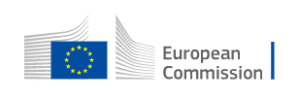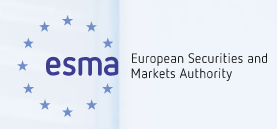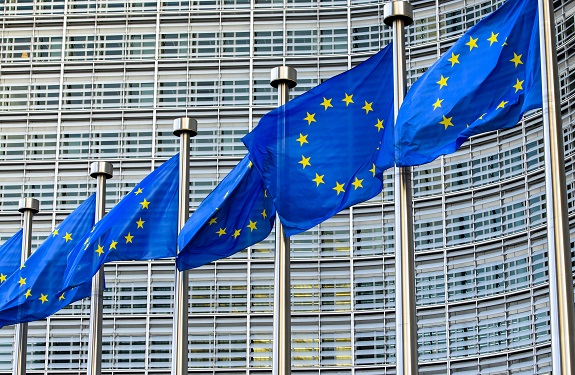Under the label of “Capital Markets Recovery Package: MiFID and EU Recovery Prospectus”, the European Parliament voted on 10 February to adopt the directive amending “Directive 2014/65/EU as regards information requirements, product governance and position limits and Directives 2019/878/EU and 2013/36/EU as regards their application to investment firms, to help the recovery from the COVID-19 pandemic.”

The – much anticipated by the financial services industry – adoption of the so called “MiFID Quick Fix” marks the start of a relaxation and simplification of several MiFID requirements. Early on during the COVID-19 pandemic, the European Commission “stressed that liquidity and access to finance” would “be a continued challenge in the months to come” and that “it is therefore crucial to support the recovery from the severe economic shock caused by the COVID-19 pandemic by cutting red tape through introducing limited targeted amendments to existing pieces of financial legislation.”
The set of measures that the European Commission proposes to alleviate some of the administrative burdens placed on the financial services industry and support the ongoing efforts by this industry in combating the pressures placed on the European and global financial system, further stipulate that the reduction in regulatory complexity should in no way interfere with the obligation of financial firms of always providing sufficient investor protection.

The acknowledgement (or admission) by the European Commission that the measures adopted in scope of Directive 2014/65/EU “not fully achieved its objective to adapt measures that take the particularities of each category of investors…sufficiently into account” will be perceived as a welcome message by many financial firms and market participants – although it should hardly be considered a surprise. A more granular – and rational – distinction between measures improving investor protection for the different categories of investors (retail clients, professional clients and eligible counterparties) is an important cornerstone of the simplifications adopted in the “MiFID Quick Fix.”
Against this background, the concrete measures voted to be adopted by the European Parliament are the following.
The issuance of bonds is recognized to be a critical component for governments and companies alike in raising capital now and during the recovery taking place after the COVID-19 crisis. In order to deepen the European bonds markets, the product governance requirements – applicable since the previous MiFID directive – no longer need to be applied for bonds with a ‘make whole clause’. Since this clause protects investors against a loss of capital in case the bond is called before maturity – by ensuring payment equal to the net present value of the outstanding coupons – the European Commission deems this product-type to be safe and simple enough for all investor types.
Since the target market requirements associated with this product type usually limited the sale of these bonds (on the secondary market at least) to retail investors, a relaxation of these requirements will open up these products to a new market segment. Whether the appetite of retail investors to buy plain vanilla bonds in times of unprecedented low interest rates – and thus whether this ruling will have any material impact on the bonds market – is still to be seen.

An earlier “call for evidence” on the subject organized by the European Securities and Markets Authority (ESMA), inspired the European Commission to relax the obligations for investment firms with regards to inducements, costs and charges disclosure towards professional clients and eligible counterparties. These categories of investors are assumed to receive sufficient information when negotiating their contract with the investment firm and – with the exception for professional clients that have a portfolio management or investment advice relationship with the investment firm – no longer need to receive the standardized cost and charges disclosure.
Also with regards to mandatory service reports – 10% loss reports on portfolio or derivatives position for example – the obligations towards professional clients and eligible counterparties are relaxed. In the same vein as the cost and charges disclosures, it’s no longer obligatory for investment firms to provide these reports to clients belonging to these categories – but professional clients maintain the option of opting-in for these reports. This opt-in measure will – in all likelihood – put financial firms in a difficult situation with regards to whom the reports still need to be disclosed and which clients no longer want to receive them, as it’s unlikely this level of granularity was foreseen in their IT-systems based on the obligations in scope of the Directive 2014/65/EU.
Further stipulations included in the new directive with regards to the cost/benefit analysis a financial firm needs to present a client with which the firm maintains an ongoing relationship when ‘switching’ one financial instrument in the portfolio for another, seem to introduce a new layer of information and complexity in the ‘advice’ process. The newly published definition of what entails a switch, is so extensive as to include several types of corporate actions. Furthermore, a quantitative analysis on how the costs associated with a sale will be outweighed by the (potential) additional yield of the security being bought, will require complex and speculative information to be disclosed to the client during the pre-sales or advice process.
It is in no way certain or obvious how this additional requirement will increase investor protection. That these new rules are only applicable for retail clients and professional clients are exempt – again, with a potentially difficult to implement opt-in formula splitting this client category in the middle with regards to which clients will (want to) receive this cost/benefit analysis when doing a switch – will likely be an empty gesture for most financial firms active in this market.
As a specific measure to improve capitalization of small- and mid-cap European companies, the European Commission proposes that “investment firms should be allowed to pay jointly for the provision of research and for the provision of execution services” in an attempt to increase research – and thus visibility – of these companies vital to the European economic texture. Based on several precisely defined financial parameters of which companies can be defined as such, there potentially is leeway for investment firms to change their approach to marketing small- and mid-cap European public companies, or those that are seeking an Initial Public Offering.
A meaningful simplification to the extensive administrative burdens imposed on the financial sector by the Directive 2014/65/EU, comes from the temporary suspension of the “Best Execution” or “Top 5 reporting.” After the “MiFID Quick Fix” directive enters into force, the publication of this report will be suspended for two years – with a planned evaluation of this measure taking place halfway through the suspension period. Whether this means that we have seen the end of this largely unnecessary report – published by almost all investment firms but consulted by almost no clients – is still uncertain at this point. The firms publicizing this report will be relieved to be rid of this obligation for at least two years – and undoubtedly regret the investment costs done to support its publication in the first place.
The switch from paper to electronic format as the default communication option for all MiFID related information, is the most anticipated measure in scope of this new directive. The “MiFID Quick Fix” does not disappoint in this regard and represents one of the more unique instances in the financial sector where a regulatory obligation coincides with the long-term ambition of financial institutions to further digitize their commercial offering. This is undoubtedly to the delight and benefit of many clients – who could be spotted carrying bundles of paper under their arms when leaving their local banking branch after a routine appointment with their relationship manager. Less digitally inclined clients still retain the option – through an opt-in formula – of receiving their MiFID related information on paper, free of charge. This saddles the financial firms with the complexity of keeping their existing ‘paper-processes’ running next to increased digitally enabled processes and does not completely liberate them from the impressive – financial and environmental – costs of printing these countless documents.

Through a set of measures applicable to the derivates markets, the European Commission hopes to deepen the European commodity derivatives market and the nascent market in emission allowances. This later is part of the “Emissions Trading System (ETS)…the Union’s flagship policy for achieving the decarbonisation of the economy in line with the European Green Deal”. A new set of rules – with regards to authorized market participants and position limits – defines the parameters and who can be active in these markets.
Conclusion
All in all, the much anticipated “MiFID Quick Fix” is likely to leave the financial sector with mixed feelings. Some of the measures that need to be in place by early 2022 are important steppingstones towards a more digitalized and greener European future – most notably the switch to electronic communication which will resonate with financial firms and clients alike. Other stipulations in scope of the directive leave its ambition of “avoid making changes that result in more burdens on the sector and leave complex legislative questions to be settled during the planned review of MIFID II” not only unrealized – but will be appreciated as yet another attempt by the European regulator of imposing unnecessary burdens and complexity on the processes and systems of financial firms, without adding any extra element of investor protection.
Sources
Text of the “MiFID Quick Fix” : st13798-ad01-en20.pdf (europa.eu)
Website European Parliament : Home | Plenary | European Parliament (europa.eu)
Website European Commission : European Commission, official website (europa.eu)
Website ESMA : ESMA (europa.eu)
